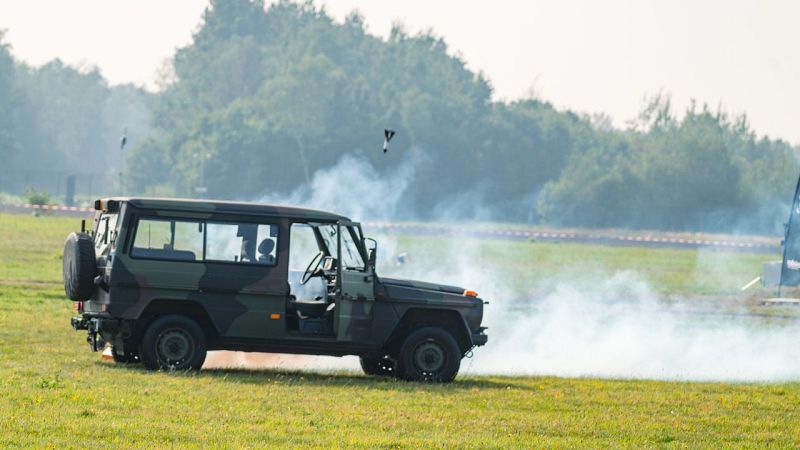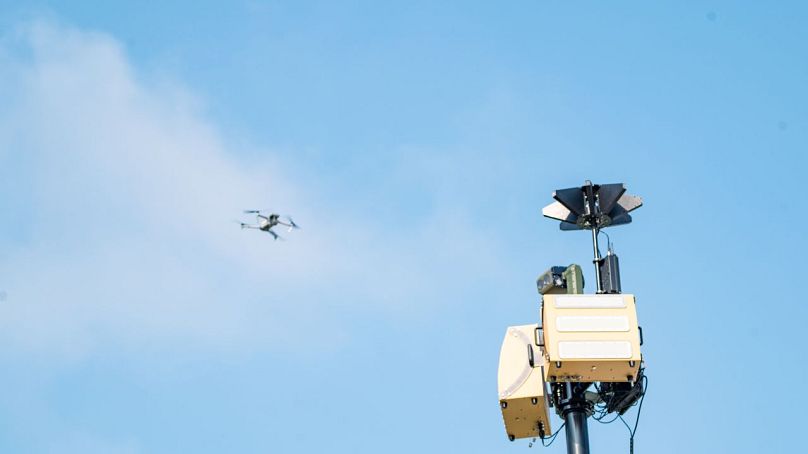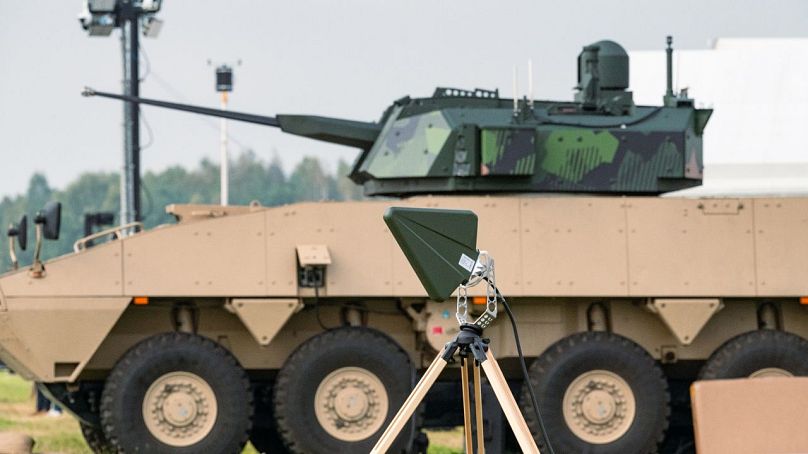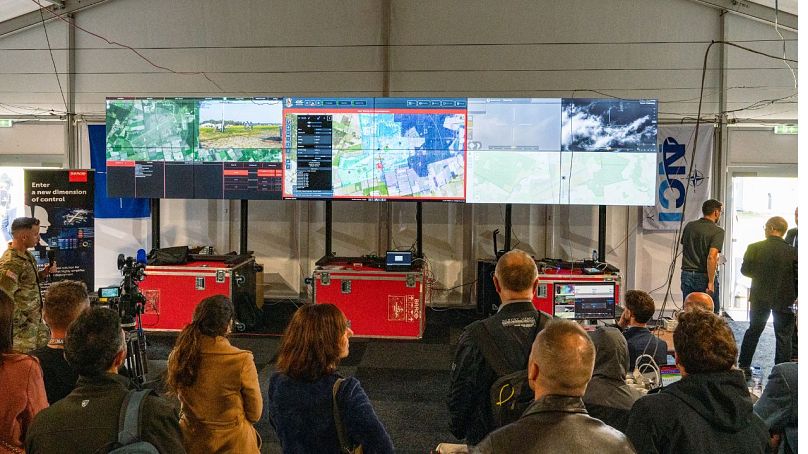NATO explores new drone technology as ‘Pandora’s box’ opened in Ukraine-Russia war

As two drones viciously circle a military truck, two soldiers escape the vehicle and a third drone arrives, causing the other two to suddenly crash and emit a mountain of smoke.
This is a NATO military counter-drone drill in the Netherlands. In real life, the soldiers would have been killed before the third drone showed up. But the exercise is testing out the latest anti-drone technology.
The drill on Thursday came the same day that Russian President Vladímir Putin reportedly said he would increase drone production tenfold to nearly 1.4 million this year in his bid to take over Ukraine.
It’s a “cat and mouse [game], that punching counterpunch measured in days. So technology needs to work hard to keep up," said Matt Roper, chief of joint intelligence, surveillance and reconnaissance at NATO’s tech and cyber department.
“Russia have shown themselves as capable adversaries in the electronic warfare realm," he told Euronews Next.
“We've learned and experienced a lot through watching what's happening in the Ukraine, and we're adapting accordingly”.
More than 50 counter-drone technologies were on display at the annual NATO exercise with more than 19 NATO member states in attendance, as well as, for the first time, Ukraine.
The biggest problem for Ukraine’s fight now is drones, said Yaroslav, from Ukraine’s Innovation Centre at the Ministry of Defence, who did not want to give his surname.
‘Pandora’s box’
“They are constantly in the sky. They monitor our territory along the frontline, like 20 km in depth," he told Euronews Next.
“They give us so [many] problems. Our artillery cannot operate because immediately if it's detected, a missile will go there so that’s a large problem”.
Yaroslav said the biggest threat was ISR (Intelligence, Surveillance and Reconnaissance) drones, which are used for surveillance.
He has been near the front line to test out Ukraine’s technology and said ISR drones cannot be seen or heard.
“They operate at quite high altitudes, like from 1km to 5km, and they can be a long distance from your jamming device. And it's not so easy to jam," he said, referring to the ability to interfere with them.
To overcome this, he said Ukraine is looking at other options, mostly drones that will hit the ISR drone to destroy it.
The other type of drone that is causing concern for NATO and other nations is the inexpensive first-person view (FPV) drone. FPV drones are controlled by pilots on the ground and filled with explosives.
On Wednesday, Ukraine used many of these drones to trigger a major explosion at an arsenal in Russia’s Tver region.
FPVs are made out of “common equipment, common spare parts, which is very difficult to control, and then there is so much variety of these that it's very difficult to jam all of them," said Yaroslav, who added you cannot attack them as they carry explosive materials and you cannot easily jam them.
“Pandora's box [is] already opened. It's not possible to close it again," he warned.
“If somebody decides really to attack some civil objects in Europe… with even those FPV drones, it would be extremely difficult to defend it. I don't want to use the word impossible, but near impossible," he said.
“You would be able to shoot several of them, but not all of them. So that's a huge threat. We need to be aware of this. We need to be prepared”.
‘Irresponsible use’
A potential attack on Europe is of growing concern following reports that Russia has violated NATO airspace.
Earlier this month, at least one Russian Shahed drone crashed in Romania near Ukraine’s border, and Latvia’s president said a military drone crashed in the eastern part of the country.
“We know that Russia is advancing their continued use of drones in and around the Ukraine. We know that they have represented a real source of risk and a threat to the alliance of sovereignty," Roper said.
“And we know that there have been a number of events that have given nations in the border areas concerns, where fragments of weapons systems and drones have ended up effectively inside their sovereign boundaries.
“NATO takes a very dim view of that and considers that an irresponsible use of those systems by Russia and has made that communication very clear," he added.
‘Transition point’
Roper said that “we are at a transition point” at the moment, going from research and development to operational capabilities.
Some of those capabilities are being shown at the NATO exercise.
One technology on display can listen into a drone, decide to cyber hack it in-flight, disconnect the drone from the pilot, and reprogramme and take control to fly it elsewhere.
It is currently used in 27 countries globally in big armies and with special forces.
“Nothing is easy to do when you're trying to take over an aircraft in real-time outside a factory or laboratory conditions against the pilot's wishes," Simon Foreman, operations director at the company D-Fend Solutions.
“This is really cutting edge technology and there are more challenging encoded drones that we have to deal with. But that's what cyber is all about," he said.
The next ‘watershed’ moment
Another technology on show is using artificial intelligence (AI) to help identify and differentiate between types of drones.
The Scottish company Quell AI has not yet officially launched its product but its Chief Operating Officer Bobby Hamilton said this type of technology is needed for defence against drones and protection from across state lines.
“Our models are trained for identification … but also to help maintain tracks on targets and then detect from a far distance and get situational awareness for the user," Hamilton told Euronews Next.
AI in drones is the “next watershed technology horizon” for NATO, said Roper, in terms of how it is embedded and how it would counter AI drones.
On the one hand, it can be used for defence purposes to more easily spot drones but on the attacker’s side, AI, machine learning, and computer vision can be used in drones to aim bombs and explosives to target a certain spot.
“It changes the environment in terms of how we will deal with the threats when we know that there is a very sophisticated level of AI applied to the adversary's drone," Roper said.
Today




